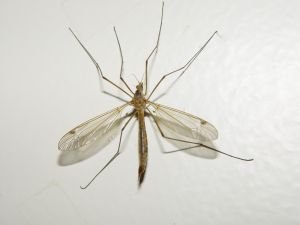|
Heartworm disease is a serious pet medical issue.
The purpose of this article is to provide an overview of heartworm disease, heartworm symptoms, heartworm treatment, and related topics.  The Scope and Reach of the Heartworm Despite what many people think, heartworm problems are not unique to the canine species. Heartworm in dogs is certainly what you’ll hear about the most, but this silent killer can affect cats, ferrets, horses and in rare cases humans as well. The term silent killer is used because often times heartworm disease does not present overt symptoms until the infection has reached critical mass. In other words, you don’t know about it until it gets really bad. In order to prevent this potentially deadly disease from affecting your pet, you’ll need to become familiar with dirofilaria immitis (the scientific name for the heartworm). This article on heartworm disease will get you heading in the right direction, but if you ever have questions, be certain to contact your veterinarian. Stages of Heartworm Development Dirofilaria immitis (heartworm) will undergo several stages prior to reaching full maturity. Heartworms depend heavily upon the mosquito, which will pick up the parasite from biting an already infected host. Once the mosquito bites the infected animal, it will continue on, unaware or unaffected by the larvae it is carrying. The mosquito will then find another host, most often the family dog. As the mosquito sucks blood from your pet, it will simultaneously transmit the larvae into the blood stream of the second host (your dog).
The heartworm larvae will then continue to mature in your dog. It will take approximately 7 months for the heartworm larvae to become sexually mature enough to begin to produce offspring. Unfortunately, heartworms are very fertile creatures capable of producing hundred or even thousands of offspring at a time. Once inside the host, the larvae will begin their migration to the heart, lungs and surrounding blood vessels. All the while, the heartworms will continue to grow, males will typically reach 4 to 6 inches in length and the female worms will reach lengths of up to 12”. It will take approximately one year for the heartworms to reach full growth. The average life span of the heartworm can be up to seven years. What are Heartworm Disease Symptoms? Once bitten by an infected mosquito it may take up to one year before your pet shows any overt symptoms of heartworm disease. Sadly, it takes about 6 months in order for blood tests to detect the presence of heartworm larvae. They are growing in your dog but you cannot detect them for many months. If left untreated, your normally healthy active dog may begin to develop a cough that seems to be more bothersome during times of physical exertion. As time progresses the symptoms will worsen, causing the animal to tire more readily, lose weight, and in some cases, fainting may occur. Heartworm Treatment With regular check ups, your veterinarian will be able to head off major heartworm disease infestations before your pet becomes seriously ill. The testing procedure is relatively simple; it will involve your veterinarian drawing blood from your pet and performing one test that will check for heartworm larvae and another test that will check for the presence of adult heartworms.
Once your pet is given a clean bill of health, the veterinarian can then recommend a preventative medication. The medication is usually administered once a month, and depending on your location, your veterinarian may also recommend this treatment year round rather than just on a seasonal basis. Should your pet be found with heartworm disease, unless the infestation is extreme, chances are very good your pet will be able to recover. It’s not usually fatal. The first thing your veterinarian will want to address are the secondary symptoms of the infestation, such as heart problems, in order to ensure your pet will be strong enough to withstand the rigors of the actual treatment to eradicate the heartworms. The treatment will be given over the course of 2 or 3 days, during which time your dog will be prescribed “bed rest”, meaning you will have to make certain the dog will remain relatively inactive until the heartworms are absorbed by your dog’s body. This first phase of the treatment will rid your pet of the adult worms; the second phase of the treatment will focus on killing the young (immature) heartworms. Your dog will be retested about 7 to 10 days into the second phase to determine if the dosage needs to be increased. Once your dog has been relieved of these nasty little pests, it is strongly recommended that you perform regular follow up tests. It is also highly recommended that you maintain a preventative course of action for the remainder of your pet’s life. Heartworm disease will always be a threat to your pet. The fact is, your dog can contract the disease again if bitten by an infected mosquito. Just keep watching out for your pet and seek medical attention if you suspect a problem. Learn more...
Subscribe to the Pet Comfort Newsletter
|



